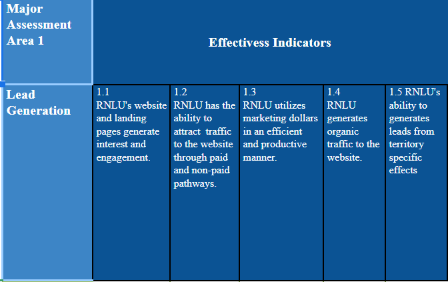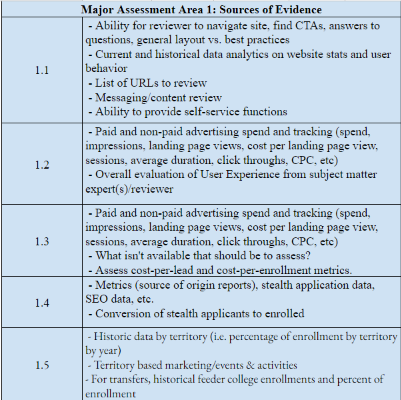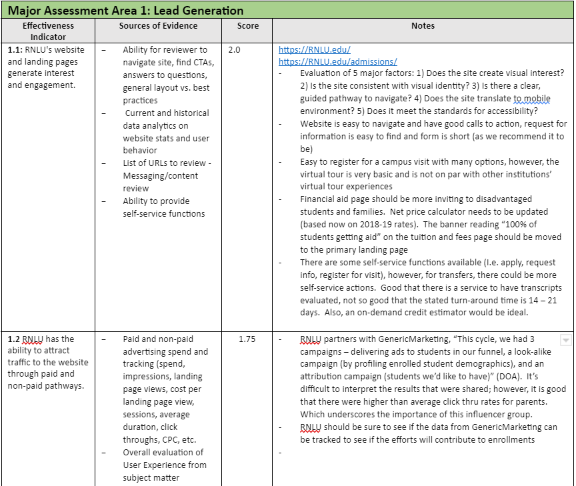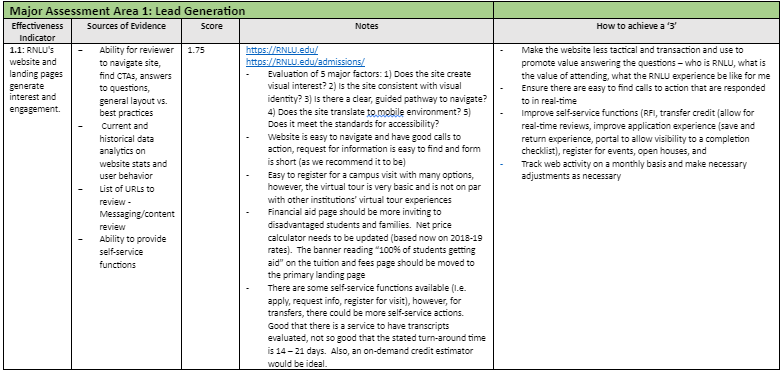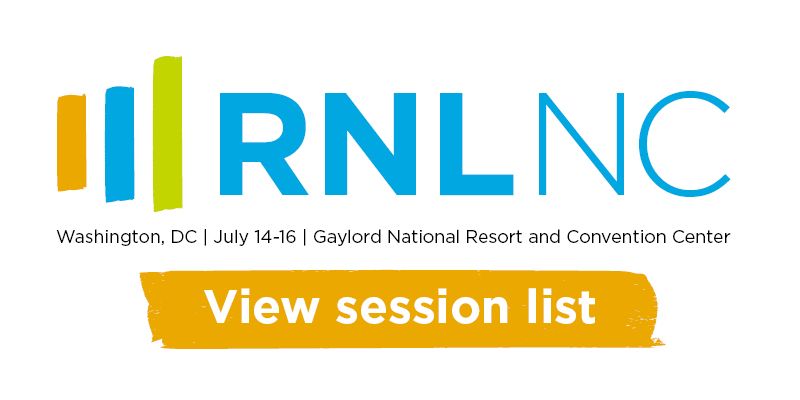enrollment
How to Conduct an Effective Internal Enrollment Management Audit
Why internal audits are important
Internal enrollment management audits measure the effectiveness of an organization and identify areas for improvement. Internal audits benefit higher education institutions because they help leaders and stakeholders meet or exceed specific goals and expectations. They also help institutions measure institutional effectiveness, identify areas for improvement, and help to create a culture of continuous learning.
How to get started with an internal enrollment management audit

First, plan on doing a data and document review using a simple scoring rubric which should include what you are measuring, how to measure it, and sources of evidence to review. Here are the four simple steps to planning the internal audit:
1. Determine what you want to evaluate. For example, if you want to evaluate the effectiveness of new and continuing enrollment efforts, your evaluation will be on “effectiveness.”
2. Develop a simple measurement scale. Do not over-complicate matters. You can use something as simple as:
1 = needs major improvements to be effective
2 = needs minor improvements to be effective
3 = meets effectiveness expectations
3. Determine your major assessment areas. If your overarching goal is to “evaluate the effectiveness of new and continuing enrollment efforts,” you’ll want to examine things related to the admissions funnel, so:
Major Assessment Area 1 (MA1) = Lead Generation
MA2 = Application Cultivation
MA3 = Yield
Other MAs would include Retention to Graduation (MA4) and Operational Efficiency and Scalability (MA5). See Figure 1 for what MA1 might look like.
Note: One of the core benefits of conducting this process internally is you can develop a rubric to suit your institution’s needs—you can expand the areas of review (or contract them), you could even take one singular area (such as Lead Generation in Figure 1) and make the entire rubric just about this. You can take each effectiveness indicator and make them MAs if you want to get really granular and tightly specific on a specific issue.
4. Determine specific effectiveness indicators and the sources of evidence within each Major Assessment area you will review. Let’s take MA1—Lead Generation.One effectiveness indicator may be focused on the extent to which the institution’s website and landing pages generate interest and engagement. The sources of evidence would come from a review of the website for navigation, providing answers to general questions, and the ability to do self-service actions (like filling out an RFI or application or getting a transfer of credit evaluated quickly).See Figure 2 for an example of sources of evidence you may look at here.
There is no doubt that this is tedious work, but setting up your excel spreadsheet with Major Assessment areas, establishing your Assessment Index and Effectiveness Indicators, citing sources of evidence, and building formulas for use by multiple reviewers will pay dividends!
Note: The initial rubric review uses only data and documentation, so it is important to supplement that with interviews. Interviews provide deeper insights into the project and can be used to find out what people think about it, as well as give a qualitative spin on the data.You can also drill down into anything that was not clear from the data and document review.
Executing the process
Once you have decided what you want to evaluate and how you will evaluate it, you’ll want to make sure that all related stakeholders know that this process is being done in the spirit of continuous improvement, not to point fingers or assign blame. Rather, it is an exploration of what is being done currently and how to do it better in the future.
Review Document: As reviewers are evaluating and entering their scores into the rubric, they should also have access to a review document in which they can add more information about their findings or make notes on items they would like to dive deeper into in the interview stage of the audit. It also provides an opportunity to tell the “story” behind the data. Figure 3 provides a snapshot of what the review document might look.
The review document should also provide an overview of the process and methodology used to create the rubric and (later) evaluate the findings. It is important for participants to know how their input will be used in order for them to be confident that it will reflect an accurate representation of their work.
Again, before executing the review process, be sure to communicate the “what and why” of the process to all stakeholders. The review document is a complementary document that is narrative based and supplements the quantitative output of the rubric. It should provide the reader with further explanation and insight into the quantitative results.
What to Report
Once your review is completed, you need to prepare a report of findings for your stakeholders. This report should start with a description of the process and framework used to generate the results. Then you should report on the current state of all of the Major Assessment areas (MAs). While your stakeholders will be interested in the current state of things, they will want to know how you go from the current state (and score) to the ideal state (and score). With this in mind, be sure to include this in the report. Figure 4 provides an example of how you might think through that key aspect of your report. Before your presentation, prepare a list of the priority items to discuss with leadership.
Conclusion: The value and impact that involved internal auditing can have on your institution
The purpose of conducting an internal review is to identify strengths and weaknesses or challenges in specific areas of operation so that they can be improved upon. Review leaders need to be sure that the process is not perceived as a time for blame but rather an opportunity for improvement and growth. Knowing what is working well will help the institution prioritize their work accordingly.
In order to understand the scope of needed changes, institutions need to understand what the gap is between what is currently happening and what is desired. The rubric and the review documents will help the institution do this. The process also helps the institution identify the most important improvements that need to be made.
RNL helps dozens of institutions every year work through this type of audit.Many times, the end result is further work on developing annual marketing and recruitment plans and/or developing strategic enrollment plans. There is always further work to be done in those cases on conducting a comprehensive situation analysis (which has some similarities but is different than an internal audit as described here).
I also invite you to hear my session, “How to Conduct an Internal Enrollment Assessment (And What To Do With What You Find)” at this year’s RNL National Conference (July 14 – 16 in Washington, DC). The conference has a robust lineup of sessions on undergraduate and graduate enrollment management, strategic enrollment planning, marketing, and more.
Join us for the 2022 RNL National Conference in Washington, DC
Hear what’s working in enrollment and student success for undergraduate students, graduate students, online learners, and more.
- Choose from 120+ sessions.
- Network with 1,000+ higher ed professionals.
- Return to campus with the strategies and inspiration to reach your goals.
